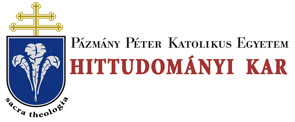Folia Theologica et Canonica 6. 28/20 (2017)
IUS CANONICUM - José Miguel Viejo-Ximénez, Raymond of Penyafort decretalist
RAYMOND OF PENYAFORT DECRETALIST 131 tioned, together with three Dominicans, in the will of King James54. In his will of August 20, 1241, Berenguer of Palou, bishop of Barcelona, ordered that any decisions concerning the legacy heritage to his diocese were consulted with the prior of the convent of Saint Catherine and with Friar Raymond55. After the death of Berenguer, the cathedral chapter asked the archbishop of Tarragona to continue the inquisition against the heresy that the deceased prelate had carried out in their diocese. Probably bearing in mind that on May 26, 1232, Gregory IX had ordered the archbishop of Tarragona and its suffragans to pursue heresy in the dioceses of the province56, Peter of Albalat ( 1238-1251 ) welcomed the request. Moreover, constitution 4 of the Fouth Lateran Council threatened those negligent or remiss prelates «in cleansing his diocese of the ferment of heretical wickedness» with the penalty of deposition. The inquisition was not, however, a simple task: the decretals and the conciliar canons of the title De haereticis (X 5.7) ordered the pursuit of the heresy but did not include a particular procedure. In 1241 or 1242, Peter of Albalat consulted with «fratre Raymondo de Pennaforti, penitentiario domini Pape (...) et aliis viris prudenti- bus» on how to proceed against heretics «secundum statuta et provisionem Se- dis Apostolice»57. Modern scholars presume that the rules given by the bishop -and passed by the III Provincial Council of Tarragona on May 13, 1242- replicate the responses of the papal chaplain and therefore include them in the catalogue of his genuine writings with the title Directorium (inquisitorum). Indeed, the instructions of Peter of Albalat and Raymond of Penyafort are an analytical compendium of clarifications grouped into twelve sections and comprised the following issues: definitions of the behaviours that the inquisitor should consider deserving a sanction (1.4, 10); the treatment of the reformed heretics (2); margin that the judge has in moderating penalties (3); the responsibilities and duties of the priests who absolved heretics in the sacrament of confession (5, 9); models of convictions or acquittals (1,6); oaths imposed on heretics, those suspected of heresy and those who support their orthodoxy or state their conversion (6, 11); information on the procedure against those who are accused or convicted post mortem, or those who die in the process (7, 8, 12); and a range of penalties (12). It was not the first time that Raymond advised the Catalonian bishops on matters of inquisition. On April 30, 1235, Gregory IX sent a «notam fratris 54 Cf. Balme, F. - Paban, C. - Collomb, J. (ed.), Raymundiana, II, num. LXII. 55 Balme, F. - Paban, C. - Collomb, J. (ed.), Raymundiana, II, num. LXIV. 56 Cf. Rius Serra, J., Diplomatario, num. VIII. 57 Rius Serra, J., Diplomatario, LXIV. On the Directorium, cf. Errera, A., II Directorium inquisitoriale di san Raimondo, in Longo, C. (a cura di), Magister Raimundus, 165-192. Torras, S. G., Ramon de Penyafort i el Procediment inquisitorial contra els H e ret jge s, in Revista de Dret Historic Català 13 (2014) 143-76.
